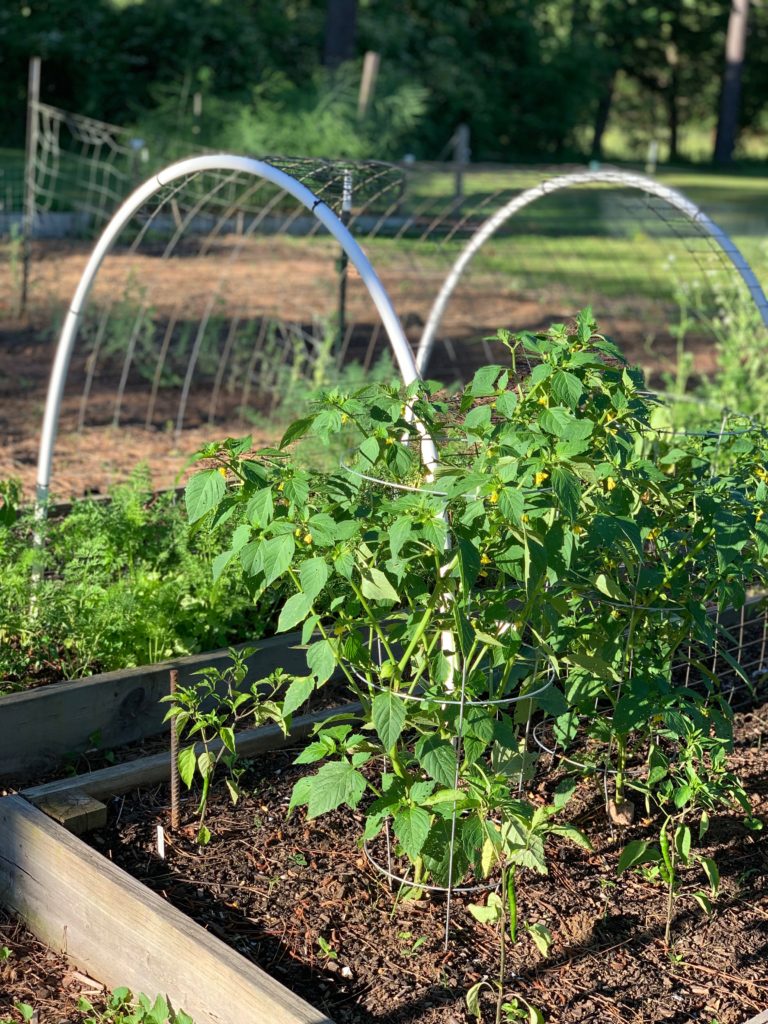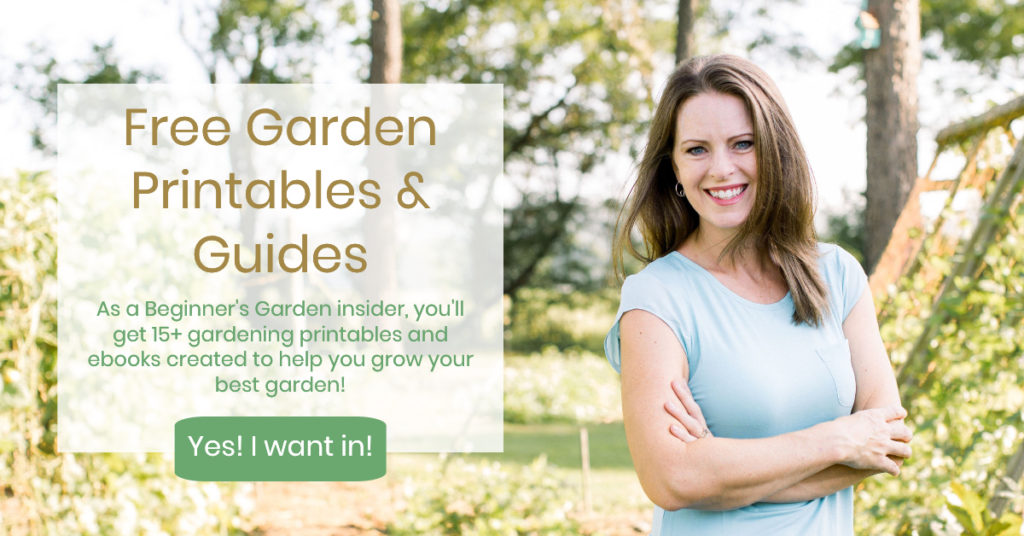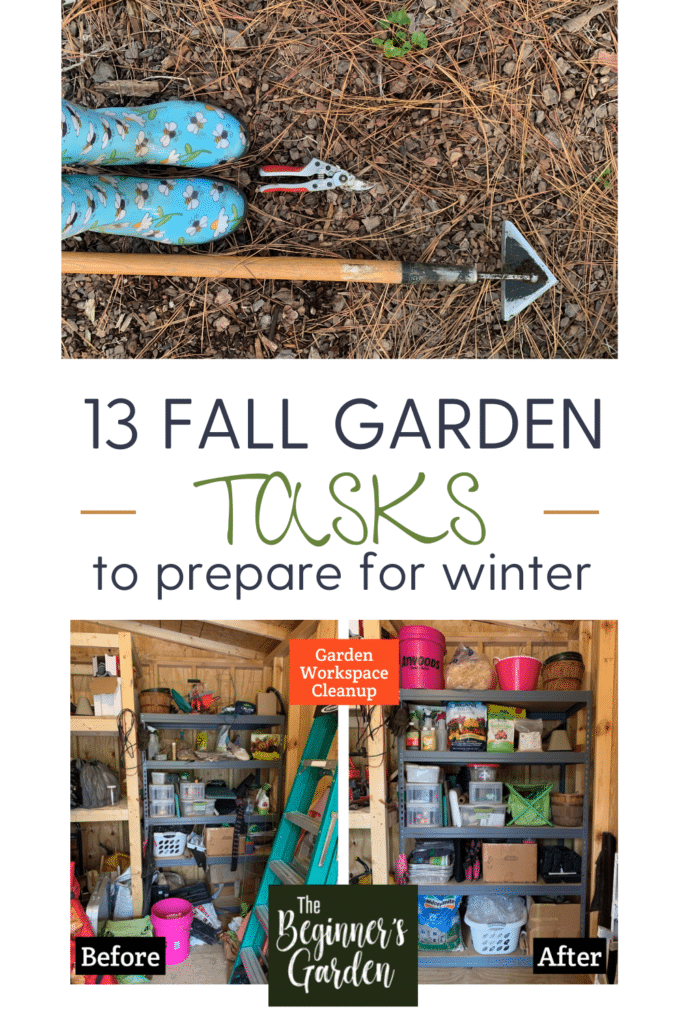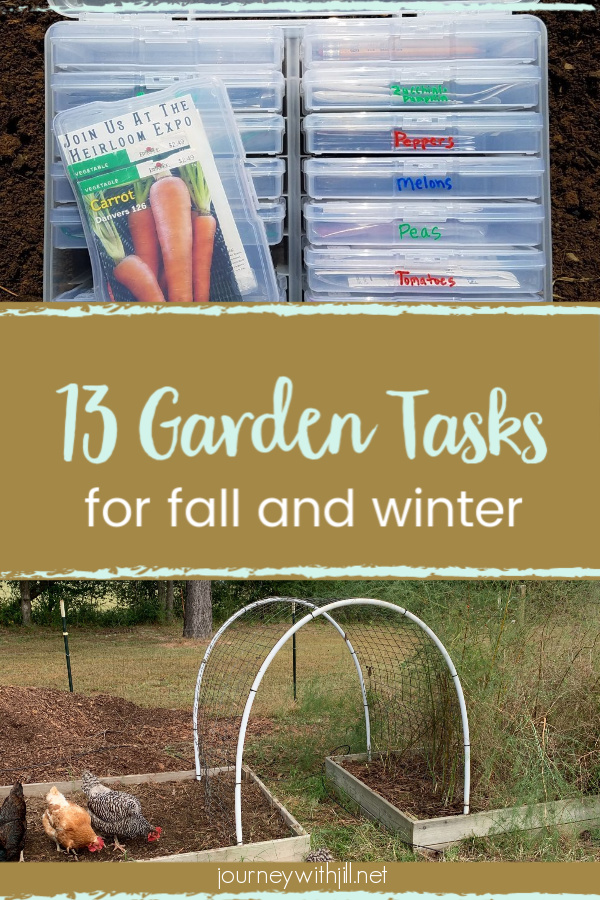13 Fall to Winter Garden Tasks
Now that your garden season is coming to a close, what fall and winter garden tasks can you do now to set you up for success in your next garden?
When spring arrives, you want to hit the ground running and not have to fuss with tasks that could have been done in the off-season.
In this episode of the Beginner’s Garden Podcast and in the article below, you’ll find 13 Fall to Winter Garden Tasks I’m doing right now to set up next year’s garden for success. Click below to listen or continue reading.
*links below may contain affiliate links
Put away Temporary Trellises
Anything that you might want to move to another place in your garden next year can be removed for the fall and winter. I remove all of the tomato cages I made from my garden. Mine are heavy-duty and resistant to the weather so I don’t worry about bringing them inside, but if yours are a different type you may need to consider storing them in a sheltered location. Removing them gives me plenty of room to work in my garden in the fall and early spring until I need them again when planting tomatoes.
Rearrange Trellis Placement (if necessary)
Some gardening trellises won’t be removed from the garden due to their size and other factors. But you may decide to change where you want them placed in your garden next season. If you plan to rotate some of your crops, this is a good time to move your trellises if needed.

I have a smaller trellis made of PVC pipe that I decided to move to a different location, and I preferred to do this in the fall instead of waiting until spring planting. I also try to move my larger A frame trellis in the off-season to where I’ll plant beans the next year.
Disconnect Drip or Soaker Hoses
Disconnect your drip or soaker hoses and bring them inside if you need to. Our climate is mild enough through the winter so I will disconnect our drip lines, dry them out, and roll them up to store outside. But if your climate is much colder it would be good to protect your hoses and bring them inside.

Empty Containers and Store Them in a Sheltered Area
If you have containers in your garden that you’re not using for fall crops, go ahead and empty them out. (I pour my used soil into one bin, and I mix new soil into it in the spring.) Wash the containers with a 10% bleach solution, and store in a sheltered location. They will be clean and ready for you in the spring!

Plant Garlic
This is the only task that is planting instead of cleaning up the garden. Unless your ground is frozen, this is a great time to plant garlic. For many of you, it’s not too late to get garlic in the ground, that is if you think garlic is for you. It is important to think about where your garlic should be planted because it will take up part of your garden space until early summer.
Mulch Perennial Herbs (if necessary)
Depending on where you live, you may need to mulch your perennial herbs. For example, in my zone 7b garden, rosemary grows well in containers all winter. But if you are in a slightly colder climate (like zone 6), you may need to insulate your herbs with mulch or move it to a warmer area. It is important to consider what type of mulch to use because you don’t want to trap water around herbs that don’t love to be saturated (herbs like rosemary, thyme, lavender, and sage). Instead, you should opt for fine gravel, sand, or pine needles.
Get a Soil Test
I believe getting a soil test is one of the best things you can do to prepare your garden for future health. The best time to test your soil is in the fall because you will have plenty of time to amend your garden, especially if your soil is too acidic or basic. Amending in the fall and winter gives the amendments more time to raise or lower pH when necessary. And if you discover you’re low on major or minor nutrients, you can research ways to add more soil fertility before or at planting time.

Amend Beds for Early Spring Crops
As I look toward next season, I am thinking now about the fertility of the soil where I plan to plant my heavy feeders like tomatoes, squash, and cabbage. I also want to make sure my early spring crops, like onions and greens, have plenty of nutrition at planting time. Especially if you know where your early spring crops will be, you can think about amending the soil anytime during the fall or winter as long as your soil isn’t under snow cover. If you want to take an organic approach to your garden, it takes time for these nutrients to become available to your plants, and the sooner you can start adding some of these organic amendments, the better.
For example, I’ll start adding rock phosphate or bone meal to areas where I want to plant onions, and I’ll add composted chicken manure to areas where tomatoes and squash will go.
Put Away Saved Seeds
Getting free produce from saving seeds is one of my favorite parts of gardening. Through the fall, I go through the process of gathering all of the seeds I plan to save and drying them to store for the spring. Last year, I found this great container that is perfect for storing my seeds — both the ones I’ve saved and the ones still in seed packets. Not only does this container organize my seeds, but when planting time arrives, I take the entire box out to the garden with me for much easier planting!

Organize Garden Supply Area
If you spend the time organizing your garden supply area, you will be so thankful in the busy spring season! Go through your supplies and see what could be thrown away (I see you, old garden gloves!). You also will discover items you need to replace. Maybe you could put some garden organization supplies on your Christmas list!

Clean and Sharpen Garden Tools
As you organize your garden supply area, you will come across tools that need to be cleaned and sharpened. Your tools are a big investment and you want to care for them so that they will last. Clean off all the dirt. Then rub some mineral oil on your metal tools. Some of your tools may need to be sharpened. These are great tutorials for winterizing your garden tools and making sure they are clean.
Inventory Your Seeds
Once you’ve organized and stored your seeds, take inventory of your seeds. Make a list of how many seeds you have. If you have my Complete Garden Planner, the inventory sheet below is included for you.

Walk Your Garden and Take Notes
Go out in your garden with a notebook or garden planner and think about last year. Think about what was planted where, what went well and what didn’t. Consider what you would have done differently. These observations will be helpful as you start to plan for next season.
Which of these tasks do you plan to focus on this fall and winter? Let me know how you’re preparing for next spring now!
Do you get overwhelmed with garden planning?

Subscribe here for my best tips to plan your garden in just 7 days -- all for FREE.
Plus, I'll send you my "In the Garden E-mail" on Fridays, periodic updates on garden resources relevant to you, and you'll receive access to my entire bank of free garden downloads!
You are also agreeing to our privacy policy.


